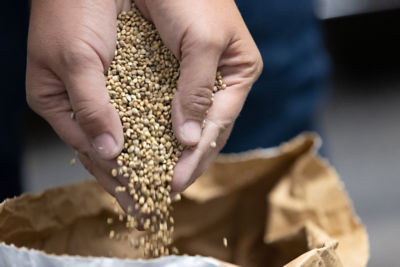Causal Agent
Cucurbit aphid-borne yellows virus (CABYV)
Vector
Several aphid species
Distribution
Worldwide
Symptoms
Early symptoms manifest as chlorotic spots on the lower leaves, progressing to interveinal chlorosis. Leaves become chlorotic, leathery and brittle, while the mid-vein and primary veins remain green. Stunting and flower abortion reduce marketable yield; however, for fruit that develop, fruit shape and quality are not affected. Prior to the development of specific detection methods, symptoms of CABYV were often attributed to nutrient deficiencies, senescence, or diseases, such as lettuce infectious yellows, cucumber yellows or cucurbit yellow stunting disorder, all of which cause similar symptoms.
 Pumpkin leaves infected with Cucurbit aphid-borne yellows virus. (Courtesy of Bryce Falk)
Pumpkin leaves infected with Cucurbit aphid-borne yellows virus. (Courtesy of Bryce Falk)
Conditions for Development
This virus is acquired by phloem-feeding aphid vectors in a persistent manner. The cotton melon aphid, one of the vectors of CABYV, is very efficient at transmitting the virus. Cucurbits are the primary hosts of CABYV. Alternate hosts include crops such as lettuce (Latuca sativa) and fodder beet (Beta vulgaris). Weeds are also recognized reservoir hosts of CABYV.
Control
Implement an insecticide spray program to control the aphid vectors. In open-field production, use of silver reflective plastic mulches can help to repel aphids. In protected culture, insect exclusion (minimum 50–52 mesh / 297 micron screens) can provide some control. Melons with aphid resistance usually significantly delay CABYV infection.



